Jump to:
Spiral, digital, body wave, beach wave, classic – how many types of perms are there?! We take a look at the different types of perms you can choose from and what makes each one unique.
We cover the 11 types of perms and share tips to help you decide which one will be the best fit for your hair in this guide.
Wondering About the Different Types of Perms? Start Here.
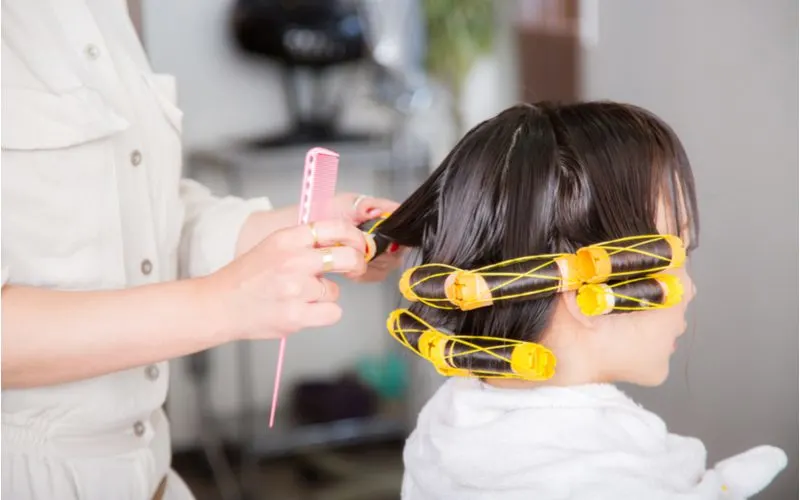
Buritora/Shutterstock
If you’ve been wondering if there’s a perfect perm type for you, you’ve come to the right place. There are several types of perms out there and whether you want intensely curly ringlets or soft, barely-there waves, there’s a type of perm that will work for you.
You just have to know what to ask for! Before we jump in with both feet, let’s quickly cover the basics first. What is a perm? Perms (short for “permanent”) are chemical treatments that change the texture and shape of your hair strands.
Typically, perms are done to give a curly or wavy texture to hair. The process is pretty simple, no matter which type of perm you get:
- Alkaline or acidic perm solution is applied to break the disulphide bonds in hair
- Hair is molded and shaped around perm rods (heated, if doing acid perm)
- Treated hair is set in the new shape with a neutralizer chemical
The idea is that perms weaken your hair with chemicals until it no longer “remembers” its natural shape and texture. It will default to the rolled shape it’s in when the alkaline or acid perm solution is applied – this is what gives you waves or curls.
The process is stopped with a neutralizer chemical, or one that brings your hair’s pH back to normal. The neutralizer step is what locks and sets the new texture and shape in place. While there are permanent straightening treatments, when people talk about perms, they’re usually referring to the treatments that make hair curly.
Now that you know what perms are and how they work, let’s take a look at some of the options you have. There are many types of perms and each one looks a little different.
The Different Types of Perms, Explained
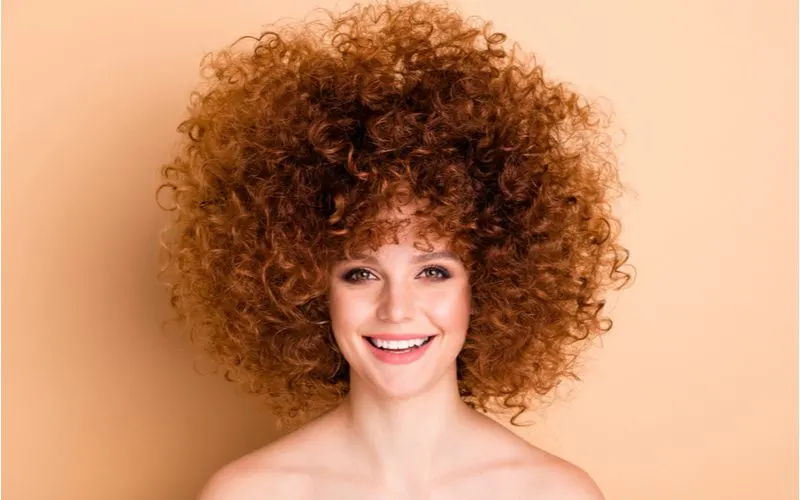
Roman Samborskyi/Shutterstock
Gone are the days of “one size fits all” perms. Today, we have a range of different types of perms available and each one creates a different type of wave or curl. But which perm type is going to give you the look you’re going for? Which one will be best for your hair type?
When you’re considering which types of perms could be a good choice for your hair, the first decision you’ll need to make is whether you’d prefer a cold perm or a hot perm. These two general types of perms have pros and cons for different hair types.
Let’s take a look at the difference between cold perms and hot perms before we talk about some of the different types of perms and the waves/curls you can get with each.
Cold Perms vs. Hot Perms: What’s the Difference?
Cold perms, or alkaline perms, are by far the most common type of perm. They don’t require heat to change your hair texture and wave/curl pattern. Cold perms involve applying ammonium thioglycolate, a strong alkaline chemical with a pH between 9.0 to 9.6, perm solution to wet hair rolled on plastic rods to form the wave or curl you want.
After the alkaline perm solution has time to break the disulphide bonds in your hair and reshape your strands into curls, neutralizer is applied to halt the process and “lock” the new shape of your strands in.
Ammonium thioglycolate is the chemical responsible for that tell-tale (gross) perm smell you may be familiar with. When you get a cold perm, the process only takes about 20 minutes because ammonium thioglycolate works quickly and doesn’t require heat.
The curls come out tighter and last longer with a cold perm than with a hot perm – about 6 months if you take care of your hair properly. But the extremely alkaline chemical used in cold perms can be more damaging to hair and may not be a good choice for anyone with fine, damaged, or recently chemically processed hair.
- Cold perms use ammonium thioglycolate (9.0-9.6 pH) that doesn’t require heat to curl or wave the hair
- Alkaline solution breaks the bonds in hair and reshapes them into tight curls or waves
- Cold perms take around 20 minutes to complete and results last up to 6 months
- Roots can be permed as cold perms won’t burn your scalp
- More damaging than hot perms – best for healthy or coarse hair
Hot perms, also called acid or digital perms, do require heat to change your hair texture and curl or wave pattern. Hot perms involve applying glyceryl monothioglycolate, a mild acid with a pH between 5-6, to reshape your hair around digitally temperature-controlled heated perm rods.
After the acid perm solution is applied and the hair is wrapped and heated on these rods, neutralizer is applied to bring the hair pH back down and “set” the hair in its new wavy or curly shape.
Hot perms take longer than alkaline perms due to the differences in the process. You can expect a hot perm to take anywhere from 2-4 hours to complete, while a cold perm takes around 20 minutes.
- Hot perms use glyceryl monothioglycolate (5-6 pH) that requires heat to wave or curl the hair
- Temperature-controlled digital perm rods are used to heat the hair
- Hot perms take around 2-4 hours to complete
- Hot perms result in softer waves or curls that last 3-4 months
- Roots can’t be permed with hot perms to avoid scalp burns
- Less damaging than cold perms – best for fine or damaged hair
To sum it up, if you have fine hair, damaged hair, or you’ve recently gotten a chemical hair treatment (color, bleach, etc.), you should opt for a hot perm (digital perm).
It’s less damaging on hair, but the tradeoff is that the results won’t last quite as long and you won’t get tight curls from this method. If you have healthy, undamaged hair or hair that is coarse in texture, opt for a cold perm.
While the alkaline perm solution used in cold perms is more damaging to hair, it shouldn’t noticeably damage healthy hair. If you have very coarse hair, the extra strength of an alkaline cold perm is needed to get the curly results you want.
Once you’ve determined if a hot perm or cold perm is best for your hair, read on to see what types of perms you can choose from. Each one will give you a slightly different type of wave or curl.
Types of Cold Perms
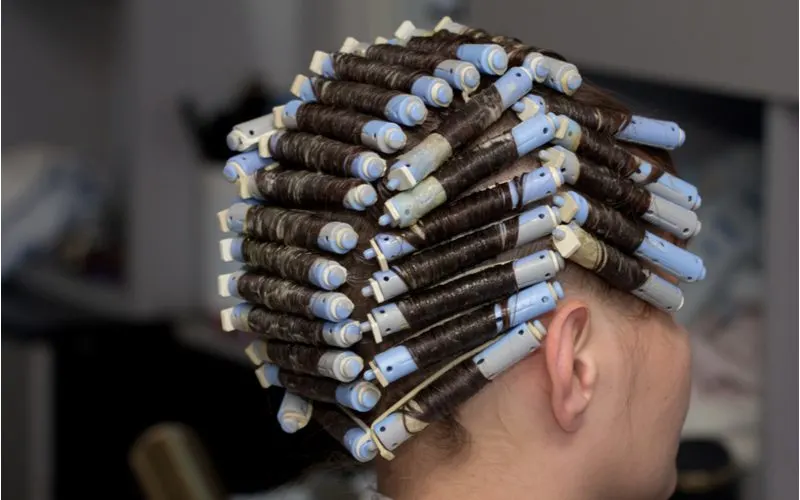
Schankz/Shutterstock
If you have healthy, undamaged hair or your hair texture is coarse, you should be looking at cold perms. This type of perm will give you the best results, takes less time, lasts longer, and shouldn’t damage your hair.
There are several types of cold perms. You can choose a classic perm for all-over, uniform, tight curls. You can opt for a cascading spiral perm. Or maybe a loose, voluminous body wave or beach wave perm is more your style. Check out the different types of cold perms below!
Spiral Perm
Spiral perms give you vertical, tightly wound spiral curls. These curls have a tight corkscrew or ringlet shape and lots of volume. Typically, a stylist will use a few different perm rod sizes (different widths) to create a natural look for spiral perms.
Spiral perms are rolled vertically on rods, where most other perms are rolled horizontally. Spiral perms give you an intensely curly look and work best on hair that is at least 8 inches long.
Body Wave Perm
Body wave perms give soft waves with lots of body instead of tight curls. If you’re nervous that your perm will turn out looking like a 1980s nightmare, the body wave perm (or beach wave perm, which we talk about next) is probably a good choice for you.
Body wave perms add just enough wave and texture to your hair to make it easier to style and give a little boost in volume. They do not give you tight curls or ringlets because they are done on larger perm rods that create loose waves.
Beach Wave Perm
Beach wave perms are very similar to body wave perms, but they use a slightly smaller perm rod to create noticeable waves and texture in your hair – not just loose waves and body like a body wave perm.
Beach wave perms work best on layered hair that helps distribute the waves. Layers ensure you won’t end up with a mass of waves at your ends and no texture further up. If textured waves with body and bounce are what you’re looking for, get a beach wave perm.
Classic Perm
Classic perms – AKA regular perms – are the perms you might remember from the 80s and 90s. Classic perms give you tight, uniform curls that are meant to be “wash and go” with no styling needed.
In a classic perm, the hair is wrapped on rods horizontally around the entire head. Almost any hair length (as long as it’s at least 2 inches long) can be a good fit for a classic perm. The finished look is voluminous, uniformly curly, and the curls can be as tight or loose as you’d like. Your stylist can use different perm rod widths to customize your curls.
Partial Perm
Partial perms, or spot perms, are done on parts of the hair instead of all-over. Partial perms can be done only at the roots (a root perm) for lift and volume, at the ends only for a little texture, or in patches or sections of the hair to help create a more homogenous hair texture.
If you have areas of hair that are less curly or wavy than the rest, a partial perm is ideal. This limits how much damage you’re doing to your hair in the process and still gives you a natural, somewhat uniform look.
Stack Perm
Stack perms are done on the middle and ends of hair strands to create a more natural look without as much root volume. Stylists will typically use different perm rod sizes to do a stack perm – it’s another thing that makes this type of perm look so natural.
Stack perms are a little more challenging to roll because rods must be horizontally stacked, leaving more hair unrolled in the sections closest to the top.
They also use different rod sizes, so it’s not an easy DIY process. Stack perms are best for medium to long hair and give the hair a full, almost layered look.
Multi-Textured Perm
Multi-textured perms look the most natural and create a range of different curl sizes and shapes in the hair. This is done by using a variety of different perm rod sizes, wrap techniques, and rod placements.
For example, your stylist might wrap the front with smaller rods for tighter curls and use larger rods in the back. Some multi-textured perms alternate perm rod sizes throughout the head for a slightly uniform but natural look. Multi-textured perms add volume and work best on medium to long hair.
Types of Hot Perms
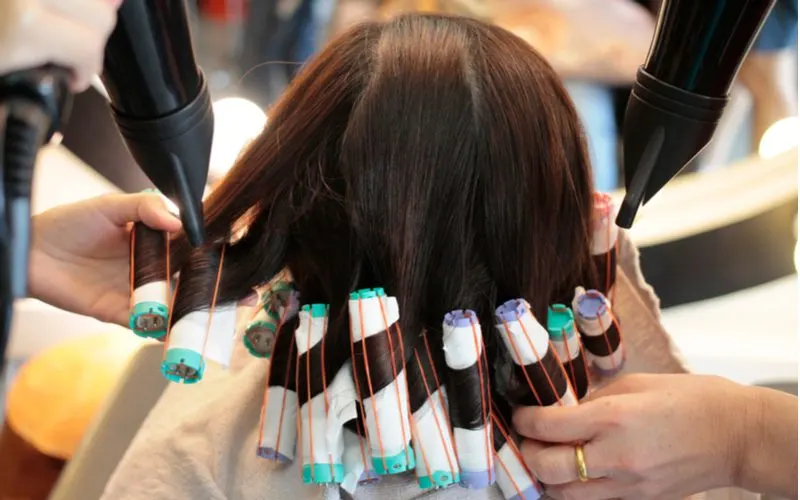
Praiwan Wasanruk/Shutterstock
If you have fine, thin hair, damaged hair, or have recently had a chemical treatment done to your hair, you should opt for a hot perm. Hot perms can give you curls or straight hair, depending on whether or not heated perm rods are used. Let’s take a look at the 2 types of hot perms.
Digital Perm
Digital perms are perms done with heated rods that are digitally temperature-controlled. This type of perm can create barely-there waves to soft curls, depending on the size and width of digital perm rods used.
Digital perms look really natural because the resulting waves or curls aren’t very tight. The acidic chemical used in most digital perms is a milder option than the alkaline ammonium thioglycolate used in cold perms.
It doesn’t damage the hair as much – but it also won’t last as long (usually 3-4 months). If you want soft texture without the commitment of a traditional perm, choose a digital perm.
Straight Perm
Straight perms, also called reverse perms, Japanese straightening treatments, or thermal straightening, use the same acidic chemical (glyceryl monothioglycolate or GTG) as digital perms – but instead of using rods to reshape the hair into waves or curls, straight perms rely on the heat of a flat iron or dryer to reshape curls into sleek, straight texture.
Once the acidic perm solution is applied to the hair, steam is used to heat the hair and start rearranging the protein bonds in the hair into their new straight shape.
Afterward, a flat iron on high heat is used to straighten the hair and set the style. Straight perms can take 6+ hours to complete, so be aware that it’s not a quick process! The results usually last up to 6 months.
Things to Consider
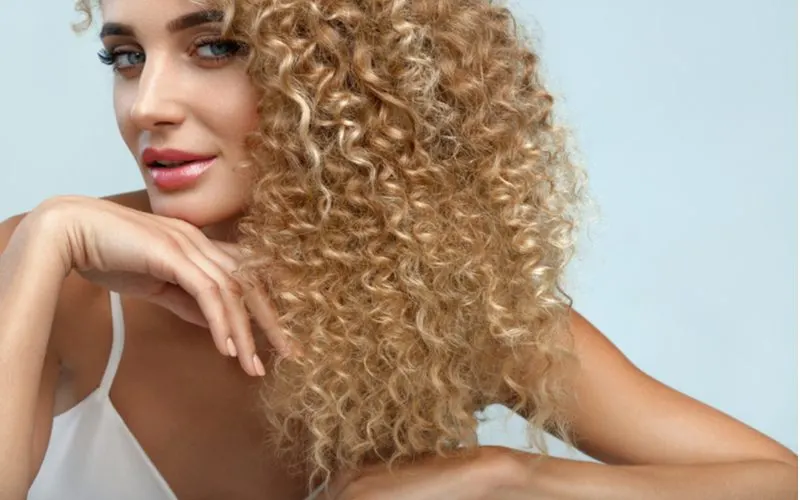
Puhhha/Shutterstock
Now that you have a working knowledge of the different types of perms out there, you can start to narrow your options and decide which type of perm is going to be best for you.
Only you know the look and vibe you’re going for, but these tips should help ensure you make a decision you won’t regret:
- Make sure it flatters your face shape. Your face shape and features need to be part of your perm decision-making process. Voluminous perm styles can be perfect for oval and heart face shapes because they help “fill out” the sides. Round and square faces should steer clear of stack perms that leave the roots flat – this can visually widen these face shapes. Looser options like body wave, beach wave, and digital perms can be a good fit for all face shapes. Read more about choosing styles for your specific face shape here.
- Some types of perms last longer than others. While a classic or spiral perm will give you results that last 6 months or longer, other types of perms are more short-lived. Partial perms and wavy perms (body wave and beach wave) last the shortest amount of time. Generally, the looser the wave or curl in your perm, the less time it’ll last.
- Get a digital perm if you have damaged hair. Damaged hair used to mean perms were a no-go, but now, gentle digital perms are an option for processed or damaged hair. Digital perms use a milder chemical with a pH close to that of your scalp and hair. They give looser waves or curls than traditional cold perms and the results won’t last quite as long, but it’s worth it to avoid causing permanent damage to your strands!
- Know how much you can expect to pay for a perm. Perm cost varies widely across the United States and the amount you’ll pay depends on the salon/stylist, hair length and thickness, perm type, and whether or not you add services on. Most people pay somewhere between $40 and $200 for a perm and the average perm cost is about $80. Digital perms and straight perms are more expensive at about $150 to $300 (digital perms) and $100 to $200 (straight perms).
- Follow aftercare instructions to the letter. Perm aftercare is not a suggestion and it’s not optional if you want your results to last. After your perm, avoid getting it wet for at least 48 hours and don’t pull it up. Don’t brush your hair, use hot tools to style it, or use a hair dryer for at least 48 hours. If your stylist gives you additional aftercare instructions, follow them! This will ensure you get the best, longest-lasting results from your perm.
- What if you hate your perm? The possibility that your perm might not turn out the way you wanted is a scary one, but you have options if that turns out to be the case. There are a few things you can do to loosen, relax, or reverse a perm if you hate it. Read our guide to learn more: How to Get Rid of a Perm You Hate: 3 Methods.
Remember to leave all types of perms to a professional for the best results. DIY haircuts and root touch-ups are fine, but perms use serious chemicals that can damage your hair if left on too long or improperly applied. You’ll get better results and come out with healthier, less damaged hair if you visit a salon for your perm.
So, What Are the Most Common Types of Perms?
There you have it — the various types of perms you can get. So, what’ll it be – a loose beach wave perm with boho charm? A classic perm for a tight, neat mass of uniform curls? Maybe a modern digital perm for healthy, soft curls that look natural?
Whatever’s on your curly wish list, there’s a perm type out there to make it happen. Just make sure you tell your stylist the look and curl type you’re going for. Bring photos to ensure you get the look you want from your perm!
